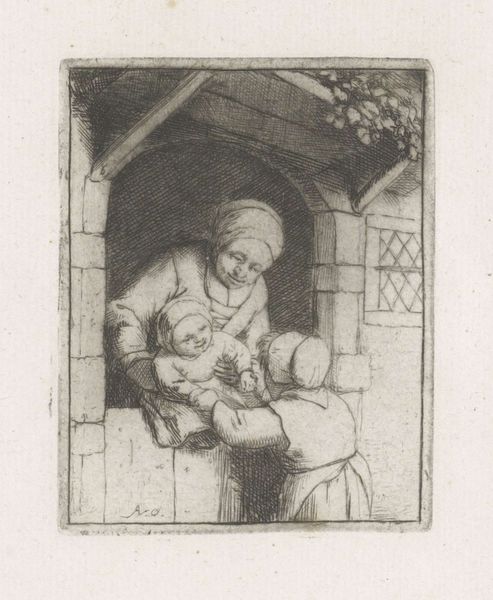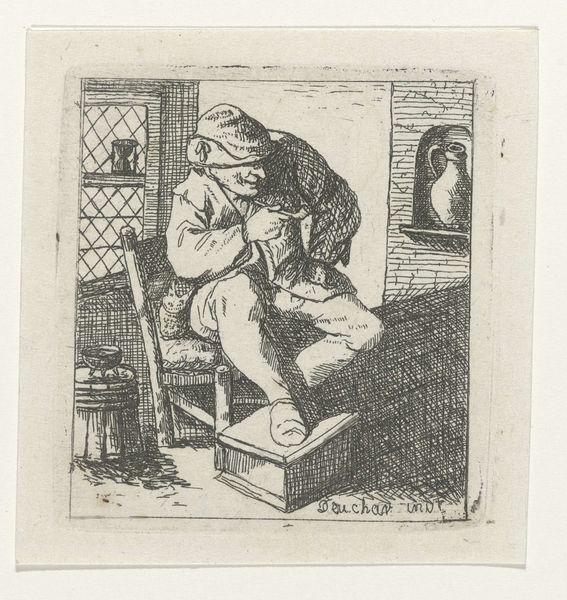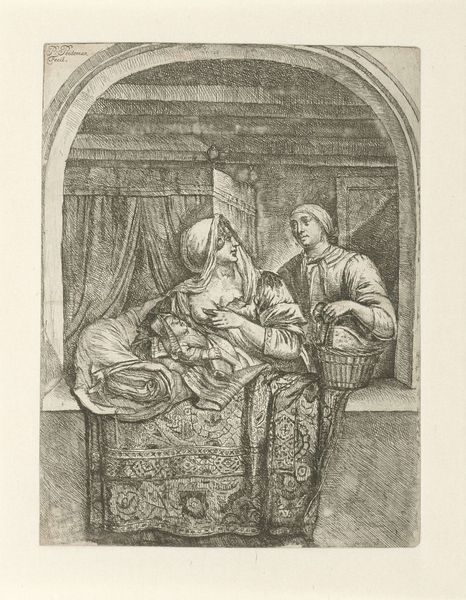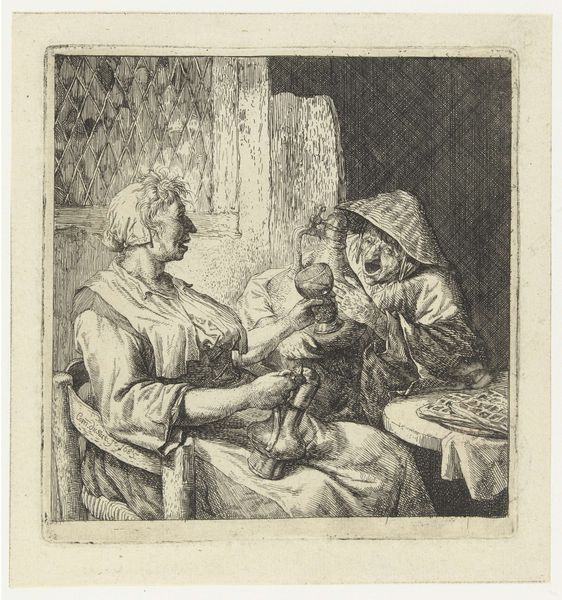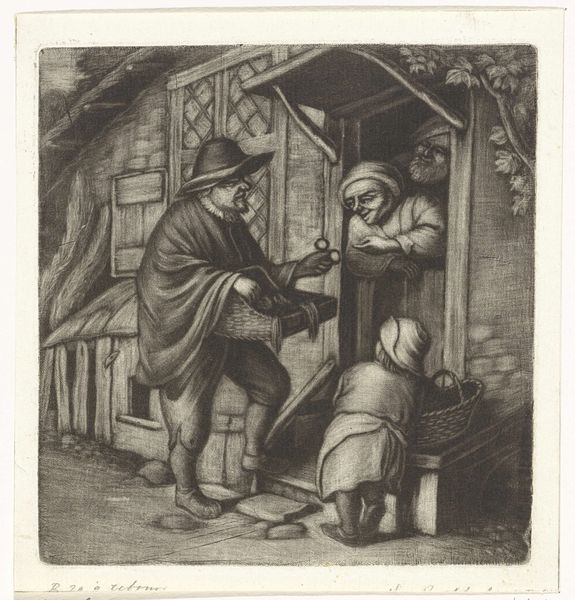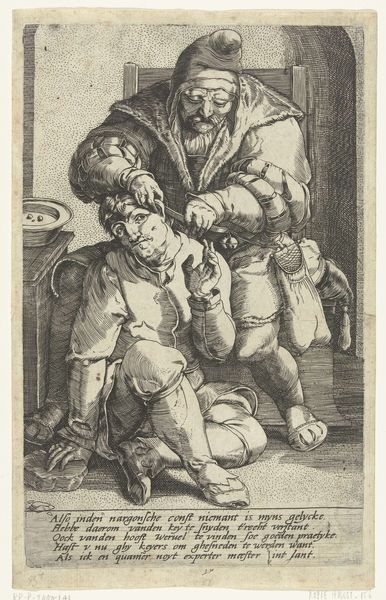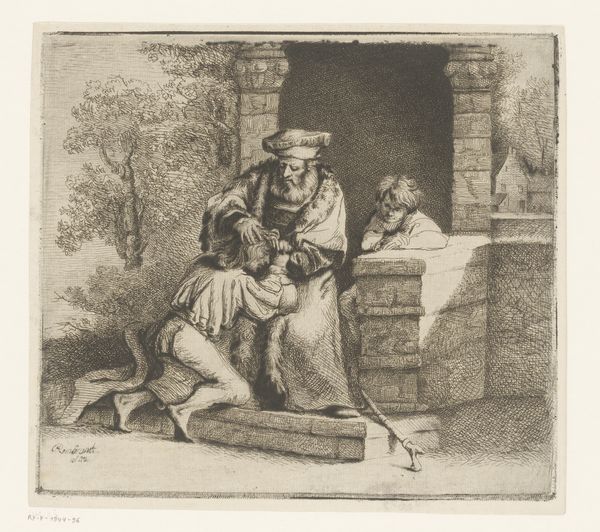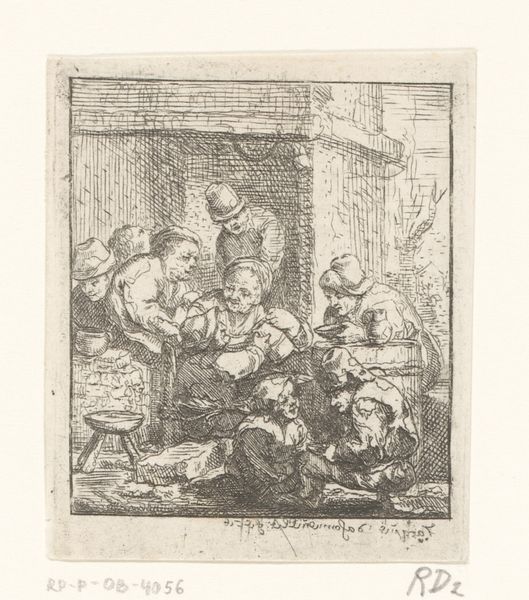
print, etching
#
portrait
#
dutch-golden-age
# print
#
etching
#
figuration
#
genre-painting
Dimensions: height 89 mm, width 71 mm
Copyright: Rijks Museum: Open Domain
Curator: Here we have Adriaen van Ostade's "Mother with Two Children," an etching likely created sometime between 1671 and 1679. It's a window into Dutch Golden Age family life, quite literally, as we observe this intimate scene framed within an arched window. Editor: My first impression is warmth, surprisingly. Despite the starkness of the etching style, there's a genuine feeling of tenderness radiating from the mother's gaze and the children's gestures. It’s so domestic; you can almost smell the stew simmering on the stove. Curator: It’s a testament to Ostade's skill in portraying everyday life. But the context of the Dutch Golden Age also plays a crucial role here. This period saw a rise in genre painting—scenes of daily life—reflecting a shift towards valuing the domestic sphere and celebrating the virtues of ordinary people. And you could read it alongside, say, contemporaneous discussions of motherhood. Editor: Exactly. The small scale emphasizes this sense of intimacy. The cross-hatching in the shadowed areas, almost obscuring parts of the window structure above, gives the light an almost tangible quality as it highlights the mother’s and baby's faces. There's something incredibly powerful in those simple lines. Like holding a whole world in my hand, you know? Curator: What intrigues me is how this seemingly simple scene subtly reinforces social hierarchies. The mother's headdress, for example, speaks to her role within the family, perhaps signalling that she’s not part of the urban elite and therefore marking out class boundaries within Dutch society. Consider this artwork alongside how other paintings depict bourgeois mothers! It is useful when considering how art both perpetuates and challenges established social norms. Editor: True! But at its heart, I think it’s a celebration of a universal connection: motherly love. And for all of this socioeconomic background information, that tender feeling hits you right away in the solar plexus. So art historians, I might argue that Ostade’s etching pulls back all the heavy curtains, inviting a fleeting glimpse, unadorned and utterly real. Curator: An interesting, visceral reflection to accompany the discussion of genre, gender, class, and domestic life. It's quite fascinating how, after our little art deep-dive, we all still see such distinct but complementary layers to Adriaen van Ostade's work! Editor: Agreed. There’s something in it for everyone, truly.
Comments
No comments
Be the first to comment and join the conversation on the ultimate creative platform.
